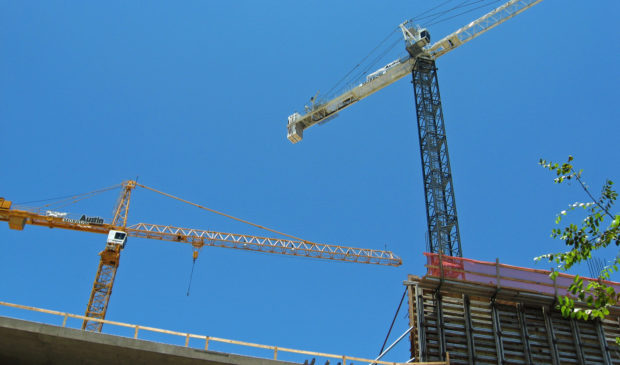Fee changes to Downtown Density Bonus Program delayed until November
Tuesday, September 21, 2021 by
Chad Swiatecki City Council and boards and commissions will have to wait until November to see the latest proposal on adjustments to the costs developers will have to pay to avoid adding affordable housing units to downtown development projects.
Staff members were expecting an update to the fee-in-lieu schedule for the city’s Downtown Density Bonus Program by the end of last month. But a memo released Friday from Rosie Truelove, director of the Housing and Planning Department, said staffers need more time to study and revise the fee structure.
When Council adopted an analysis in April of how much developers should be required to pay to forgo affordable housing, staff was directed to bring forth a complete revision by late August.
Further study is needed in part because of changes to the downtown real estate marketplace caused by the Covid-19 pandemic as well as increased construction costs and the belief by some that the city should prioritize residential units over commercial space in new high-rise projects.
During a presentation at last week’s meeting of the Downtown Commission, Sam Tedford, principal planner for Housing and Planning, reviewed the thinking behind the proposed new fees and expressed some worry in the real estate and development community that could tilt the costs and incentive structure too severely.
An interim revision to the fee schedule for the density bonus program, which is applied to all square footage above what is granted by right to property owners, looks at a matrix of uses and locations to determine how much to charge. On the low end, residential uses in the Rainey Street district are charged $5 per square foot, with commercial use in the central business district calling for $18 per square foot.
The most recent study conducted by city staff proposes significant changes, from a low of $2.50 per square foot for Rainey Street commercial space up to $24 per square foot for residential use in the central business district.
“We have to employ some of the same financial considerations that a real estate developer would use to evaluate the value of bonus entitlements compared to base entitlements, because we know if there’s no incentive to participate in a bonus program that means there are no bonus units, either market-rate or affordable,” Tedford said. “That is why we take some very careful calibration work to maximize the public benefits and achieve our policy goals. We know that as you get additional height or density there’s potentially bonus value from income, but there’s also additional risk to the builder.”
Tedford said another concern for city advocates trying to create affordable housing in new building projects is that high monthly homeowners association fees can put even affordable units out of reach of those making less than the area’s median income.
Commissioner David Gomez said Tedford and other staff should reach out to the area’s hotel and lodging community to build support for affordable units that could serve as housing for local hospitality workers who need to live downtown.
“Tourism is a really big deal in our city, and conventions and hotels have essential people that work in hotels, and it seems to me like perhaps the hotels might have an interest in facilitating,” he said. “If there’s a way to bring them into the picture to say if you want your labor force to be located somewhere close by so you can call on them when you need them … I’m just wondering if that has been discussed.”
The Downtown Density Bonus Program has been an issue of much discussion recently, with the Design Commission looking at options to reduce City Council’s role in cases involving floor area ratio.
Chair August Harris asked staff to bring data to the commission to show the impact of the density bonus program in creating additional affordable housing downtown.
“We’re talking about a fairly costly fee for developers, but it would also be helpful to know what the real impact is. The aspirational impact is very worthy, but show what is actually created,” he said. “We’ve heard a lot of criticism about the lack of success of the program, and understanding there are many conditions, we want to see what the results to date have been.”
This story has been corrected to note that the study conducted by city staff recommended a fee that ranged from $2.50 per square foot up, not starting at $12 per square foot. Photo made available through a Creative Commons license.
The Austin Monitor’s work is made possible by donations from the community. Though our reporting covers donors from time to time, we are careful to keep business and editorial efforts separate while maintaining transparency. A complete list of donors is available here, and our code of ethics is explained here.
You're a community leader
And we’re honored you look to us for serious, in-depth news. You know a strong community needs local and dedicated watchdog reporting. We’re here for you and that won’t change. Now will you take the powerful next step and support our nonprofit news organization?









